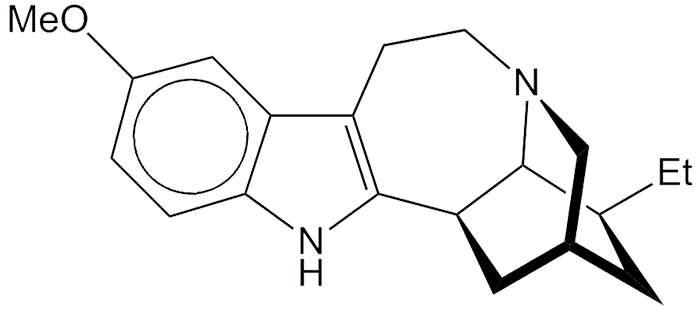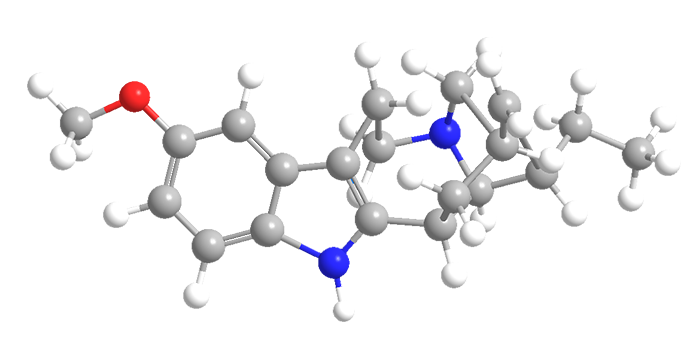

Ibogaine is an indole alkaloid that occurs in West African shrubs in the Apocynaceae family, including Tabernanthe iboga, for which it is named. Iboga root has long been used in the Bwiti rituals of peoples in Gabon, Cameroon, and the Republic of the Congo.
Ibogaine is hallucinogenic and neurotoxic, but it has shown some success in reducing withdrawal effects from drugs of abuse, such as alcohol, nicotine, and methamphetamine. Some governments, fearing abuse, have banned it outright. The US Food and Drug Administration classifies it as a Schedule I controlled substance, but it has permitted research on ibogaine for combating addiction.
MOTW update:
January 4, 2021
Ibogaine is a hallucinogenic, neurotoxic indole alkaloid that is successful in reducing withdrawal effects from abused drugs such as alcohol, nicotine, and methamphetamine. But ibogaine’s toxicity, especially its tendency to induce cardiac arrhythmia, led researchers to investigate safer efficacious analogues. David E. Olson and co-workers at the University of California, Davis, have synthesized the simpler molecule tabernanthalog that does not cause hallucinations in mice, nor does it inhibit the potassium channels linked to ibogaine’s cardiotoxicity. In rodent experiments, tabernanthalog reduced alcohol- and heroin-seeking behavior and had antidepressant effects.

Learn more about this molecule from CAS, the most authoritative and comprehensive source for chemical information.
Molecule of the Week needs your suggestions!
If your favorite molecule is not in our archive, please send us a message. The molecule can be notable for its current or historical importance or for any quirky reason. Thank you!
Stay Ahead of the Chemistry Curve
Learn how ACS can help you stay ahead in the world of chemistry.

